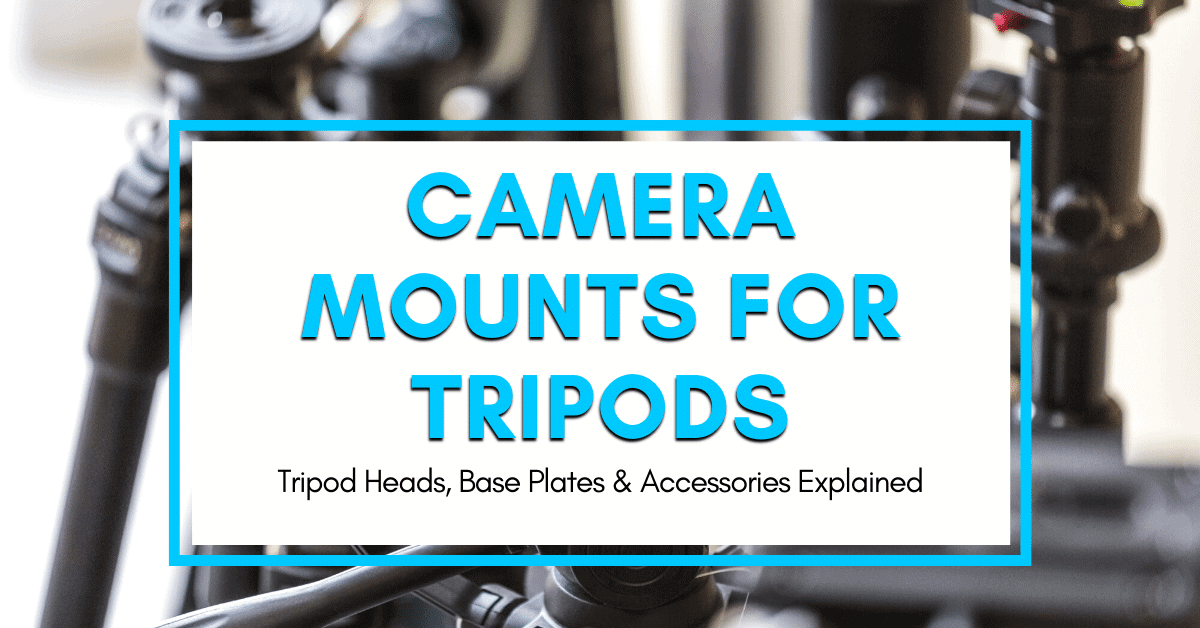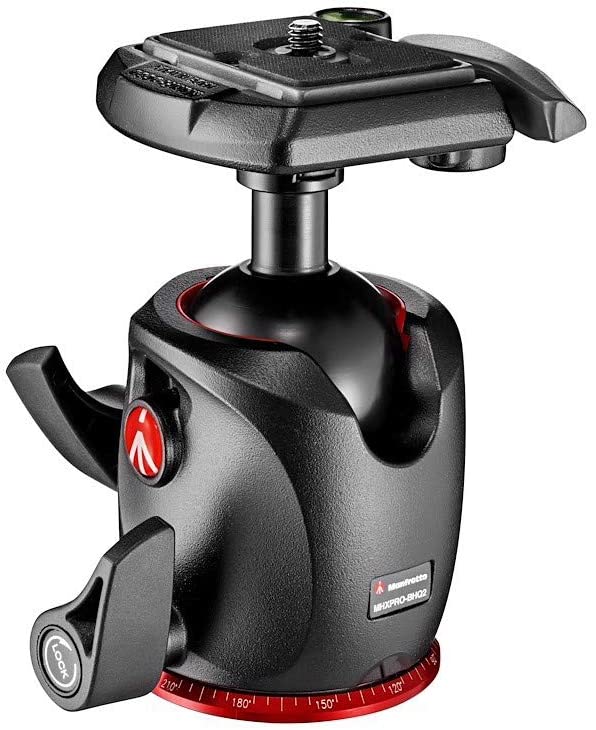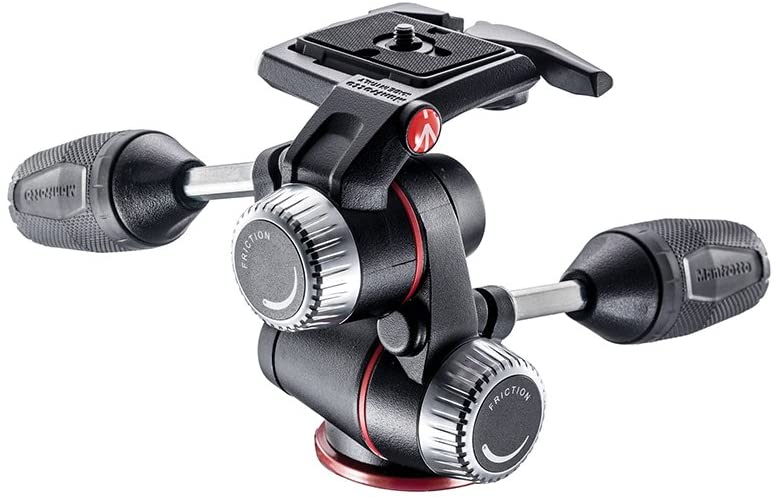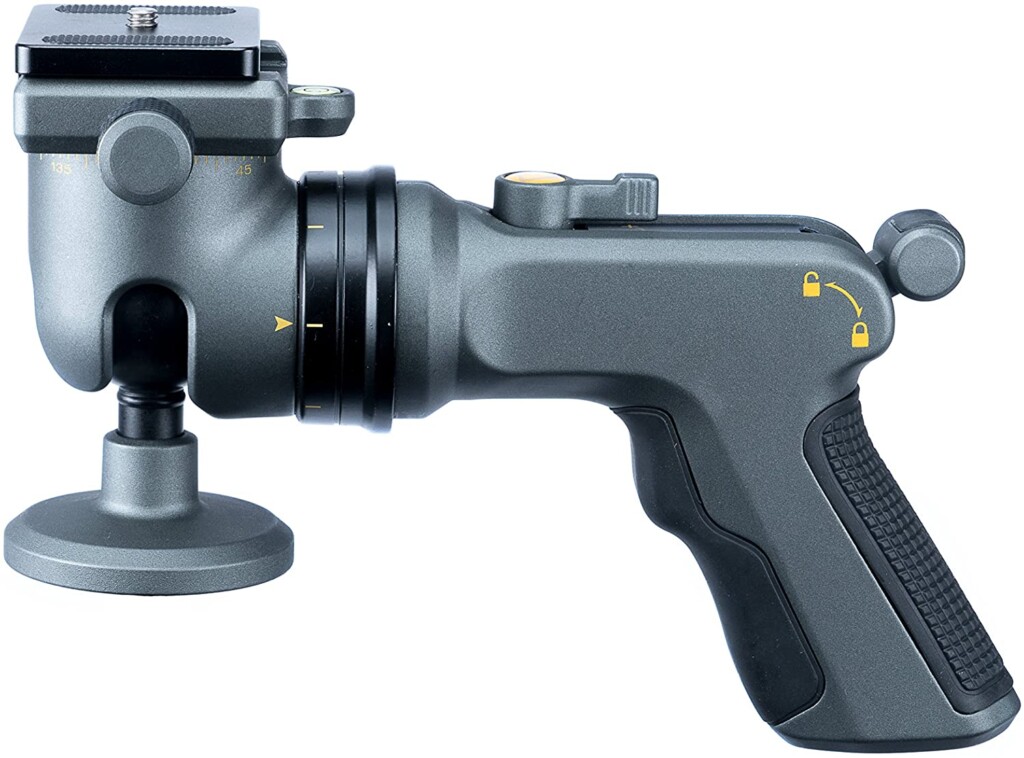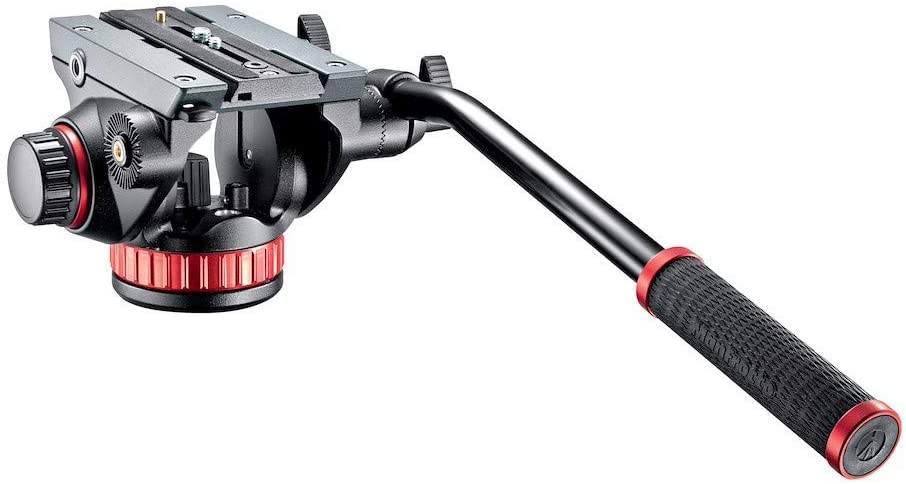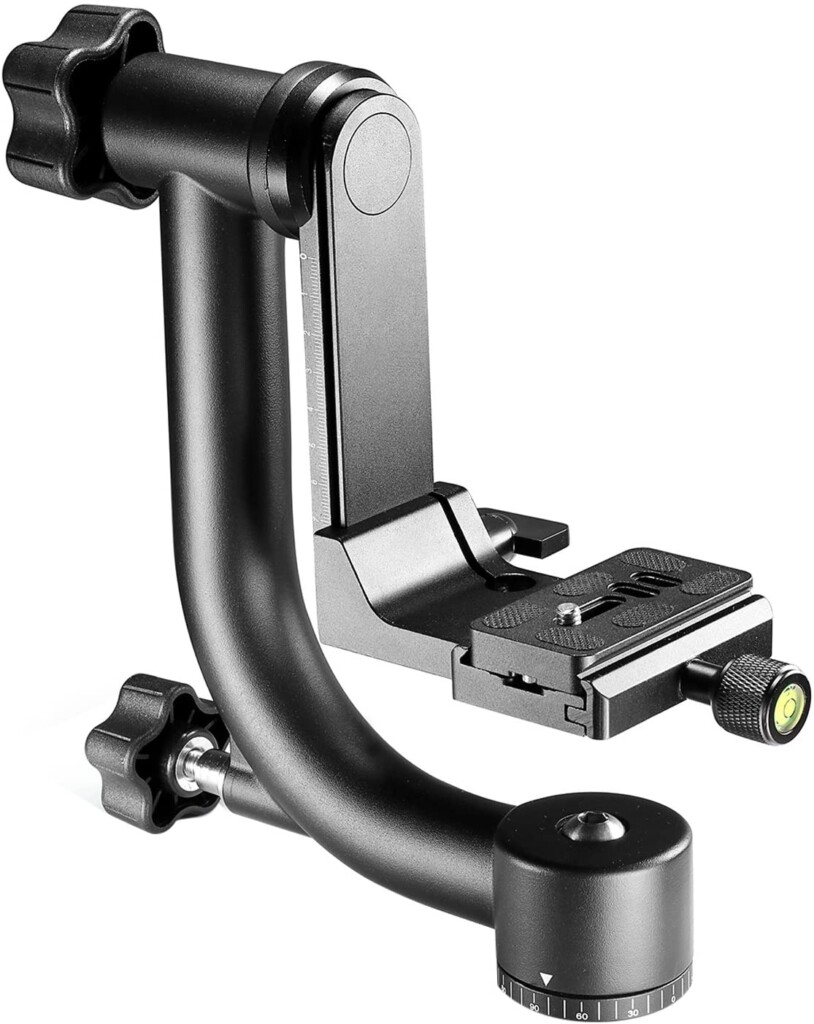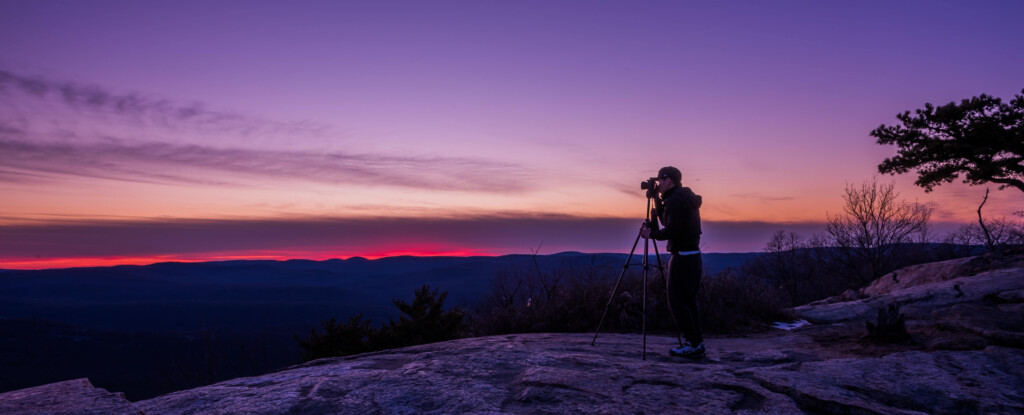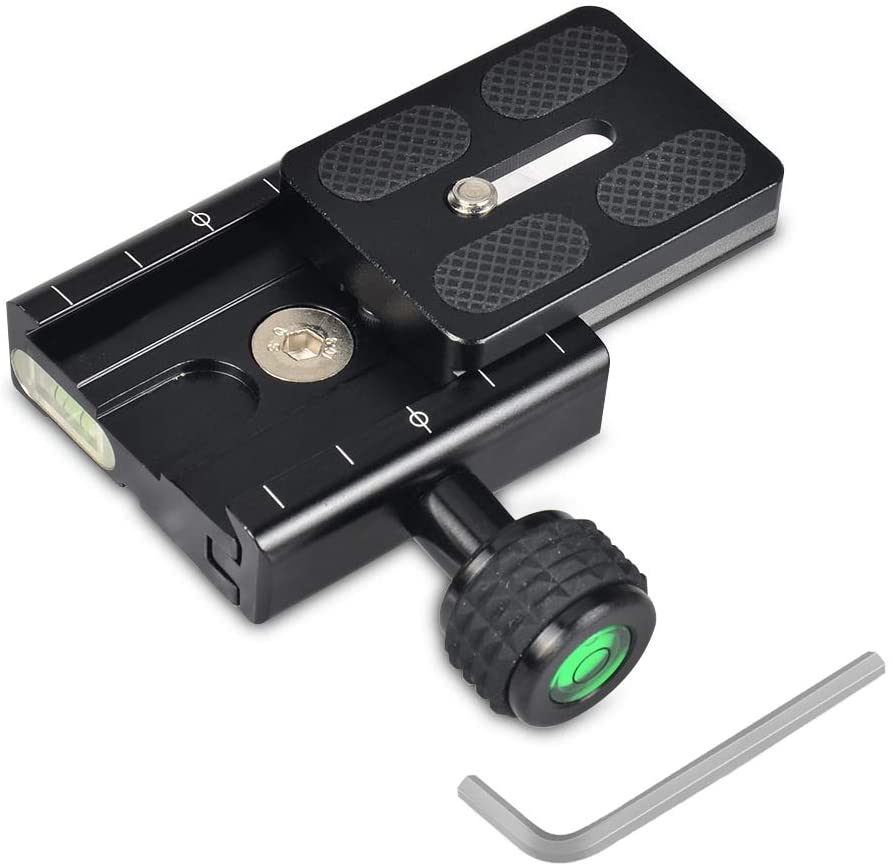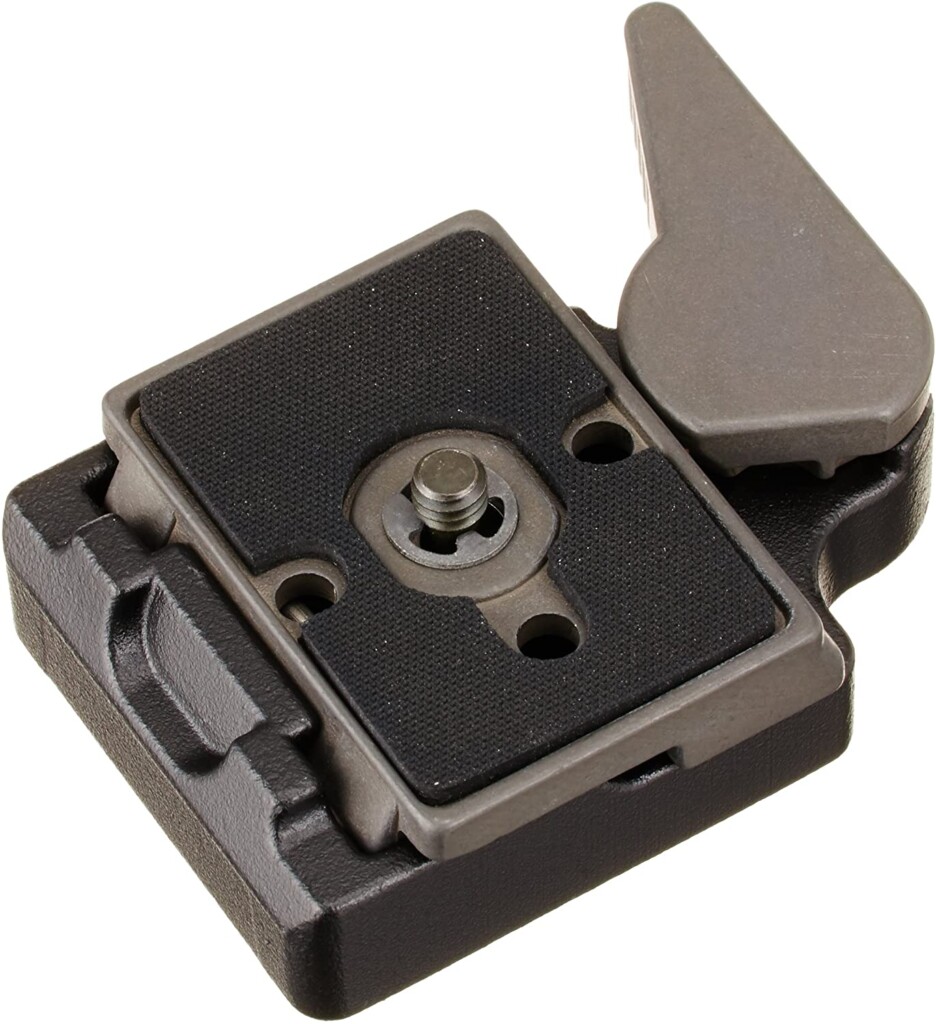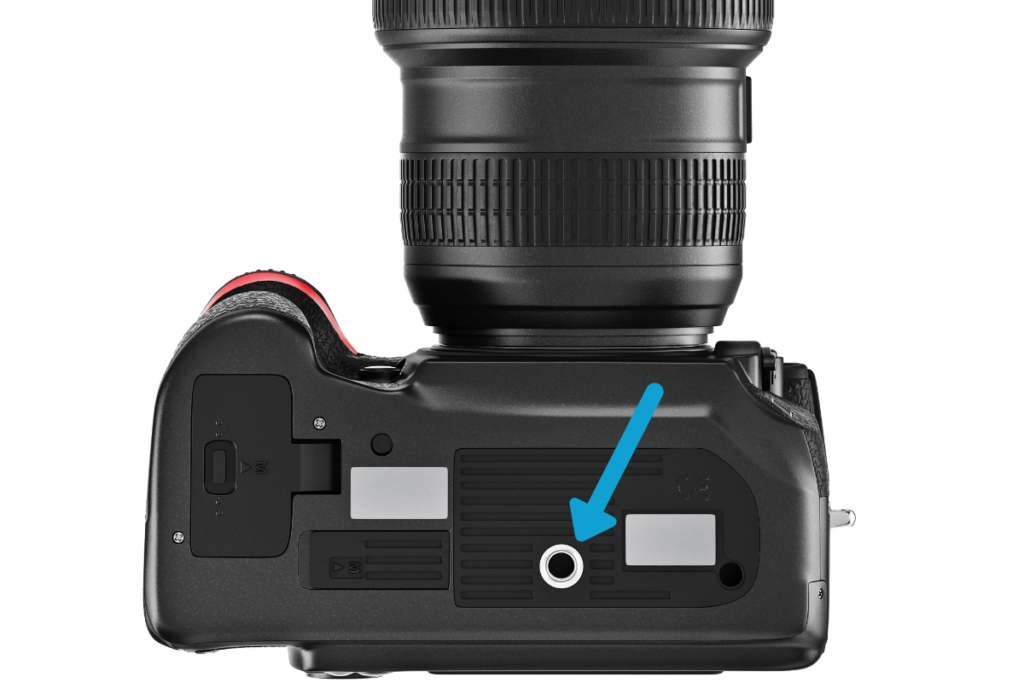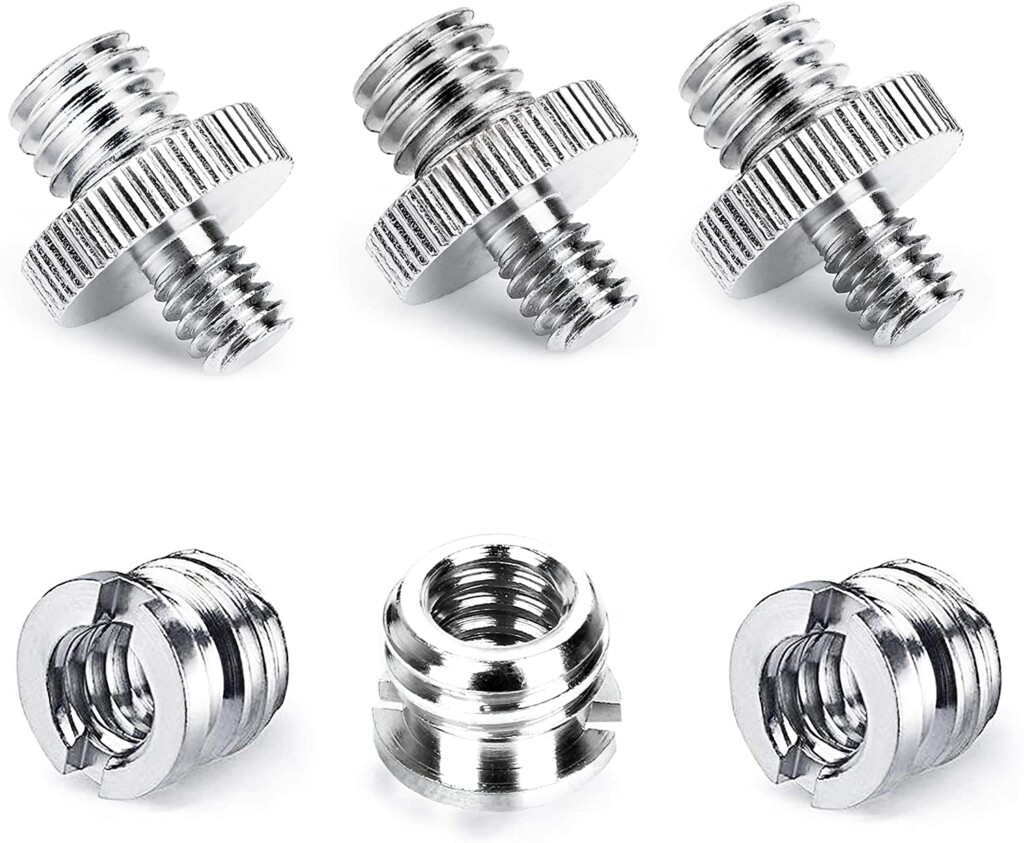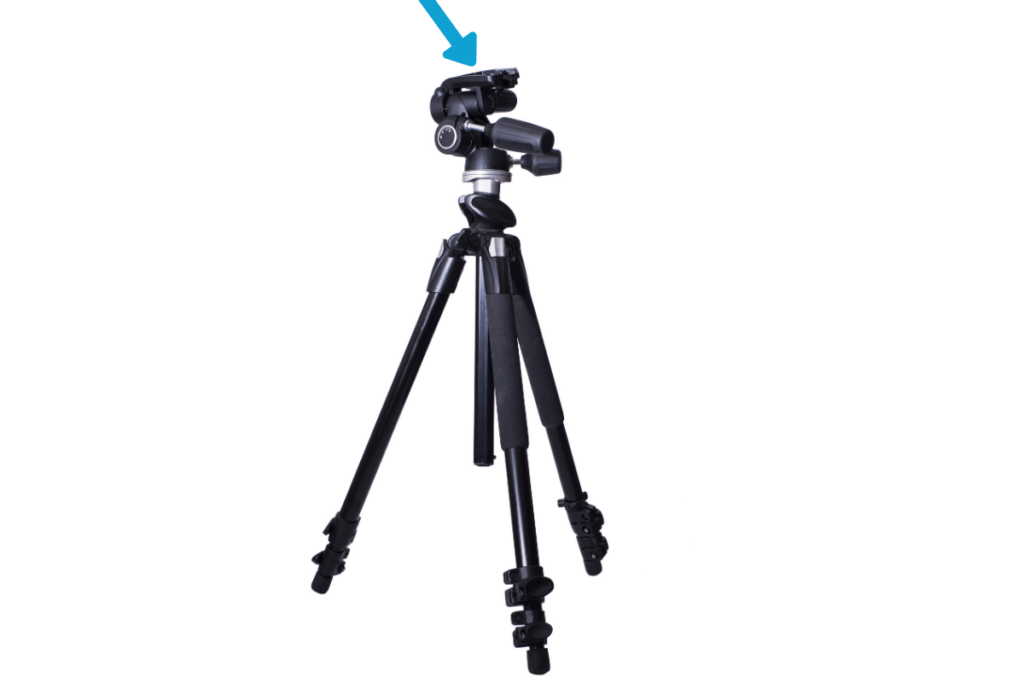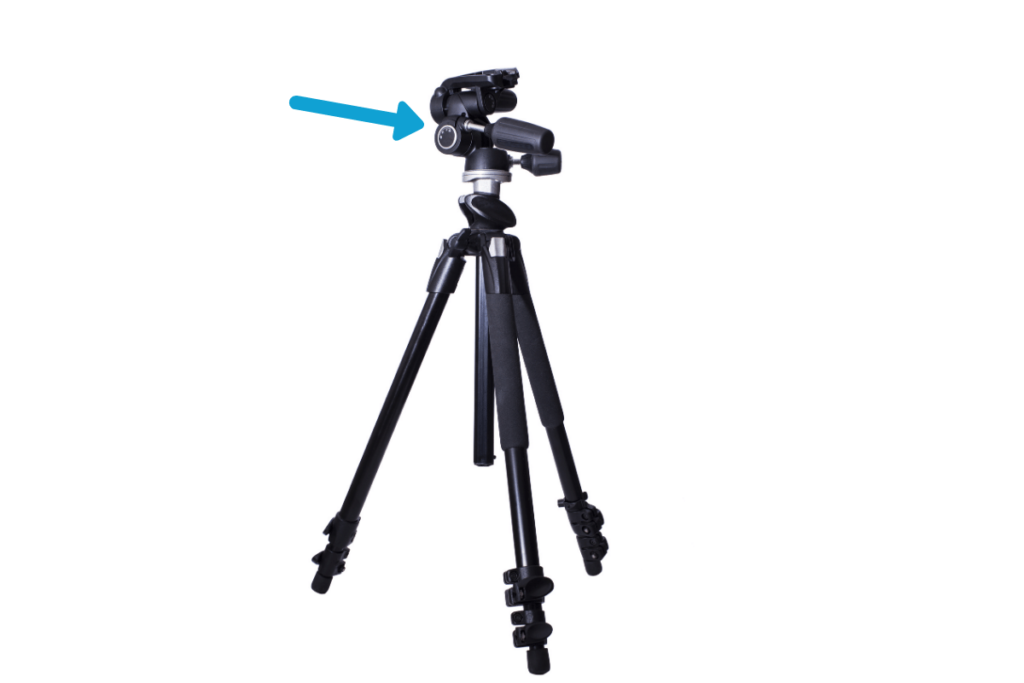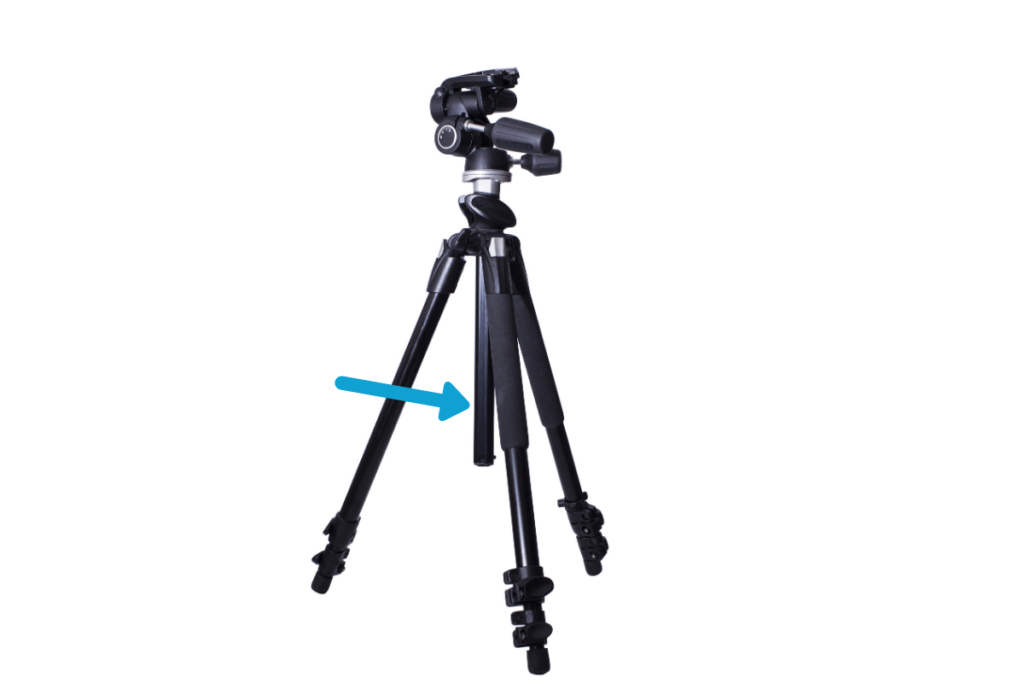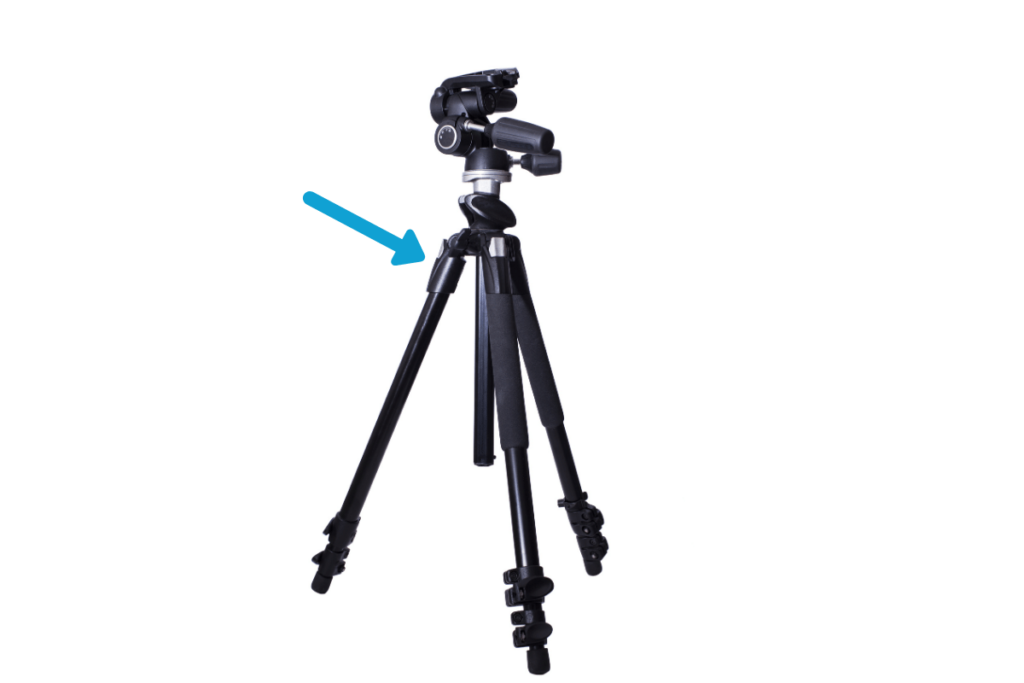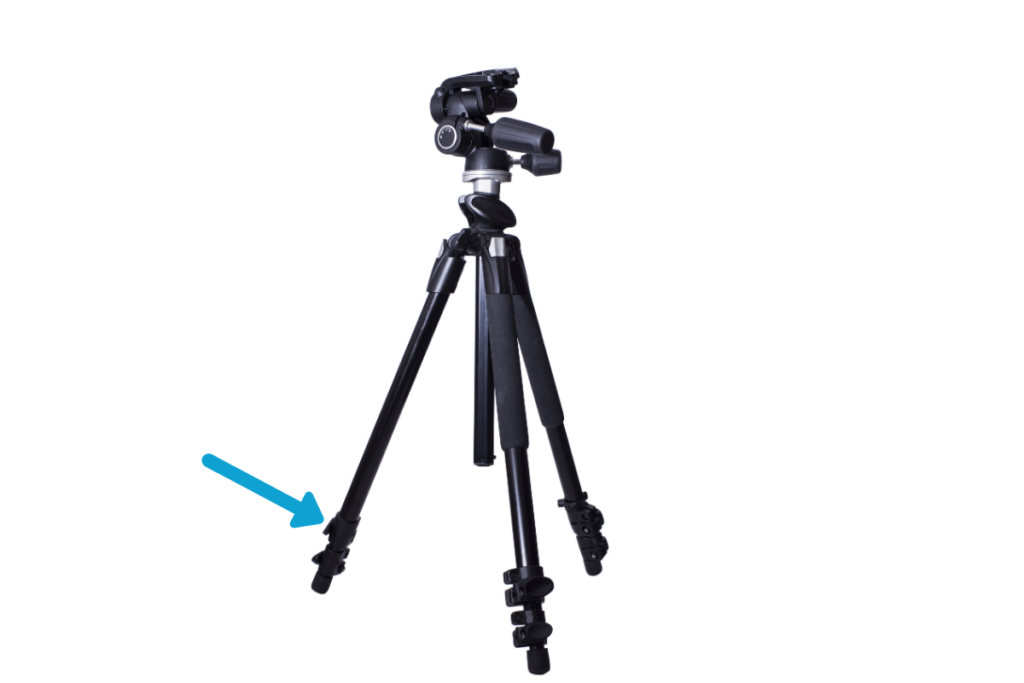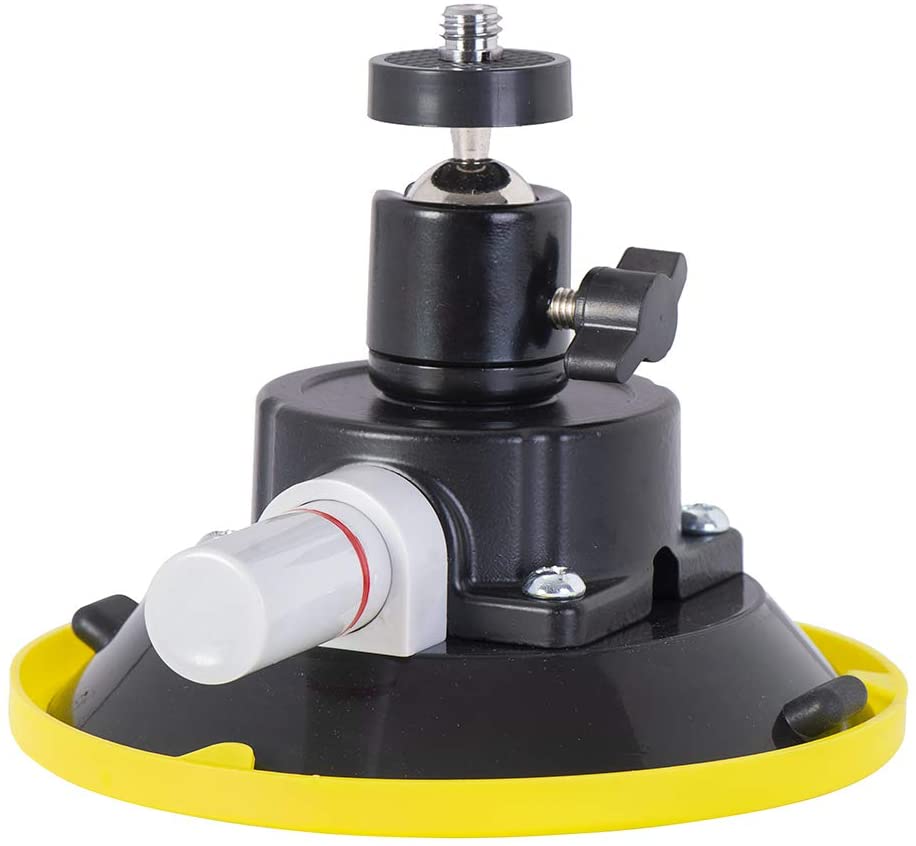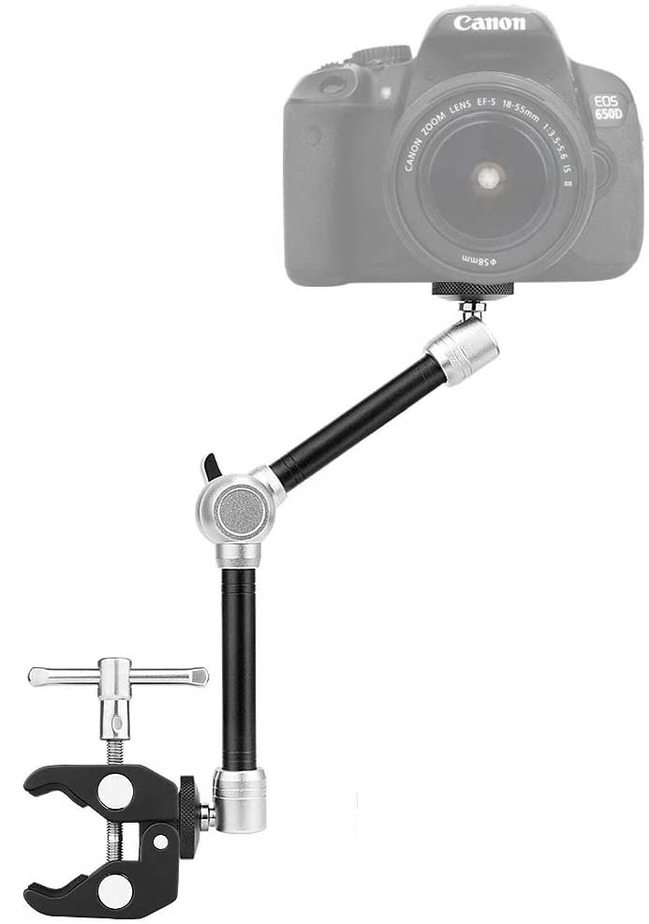Types Of Camera Tripod Mounts & Accessories Explained
If you’re looking to purchase a new tripod, it can be challenging to figure out which type of mounting system is best. There is a wide range of camera tripod mounts that serve unique purposes in different types of photography and video. Using different tripod heads and baseplates, you’ll get a completely different shooting experience.
In this post, you’ll learn the different types of tripod heads and mounting systems available for photo and video. Rather than discussing the lower portion of the tripod, this post will focus on how your camera is physically attached. Whether you’re using a DSLR, action camera, or point-and-shoot, all the information here applies to each. Let’s get started!
Types Of Tripod Heads
Whether you’re shooting photos, video, panoramas, or 3D virtual tours, some types of heads prove more useful than others. Below are the 5 different types of tripods heads you’ll find:
1. Ball Head
A Ball Head is the most common type of tripod used in photography. This head works by using a rotating ball that can be easily moved and locked into any position. With the help of an additional pan knob, you can adjust the horizontal axis independently from the loosened ball. This type of tripod head is extremely easy to use but is difficult to make small adjustments with.
Once the ball is loosened, it can move freely in any direction. So if you wanted to make a minor tweak to a certain axis, you would have to hold the camera still, or else it completely loses its original position. This is a slight pain, but overall the ball head makes up for it with more positioning options.
2. Pan & Tilt Head
A Pan & Tilt tripod head gives you far more precision than a ball head but is significantly larger with handles for the pan and tilt axis. This head works by rotating a particular handle to loosen the head on a certain axis to adjust your camera. For example, you could loosen the pan axis and easily adjust it by a few degrees.
The downside to this type of tripod head is that they’re more restricting when first finding your shot. Rather than one knob to loosen everything (like a ball head), you have to use the pan and tilt locks together to get your camera into position. This isn’t ideal for some photographers but offers better fine-tuning for perfecting the shot.
3. Pistol Grip
A Pistol Grip tripod head works like a ball head, except with a handle to make position adjustments easier. This type of head can be positioned to any axis, as well as independently control the pan axis of the head. With the help of a tensioning knob, many pistol grip heads can be used for locked-off positions or for smooth tracking shots. This works very well for tracking a subject through the frame while taking photos.
These are a great option if you don’t like having to mess around with a regular ball head. However, the downside is that this type of head is considerably larger than a ball head, making it less ideal for packing.
4. Fluid Head
A Fluid Head is the best type of tripod to use for video, but a little overkill for photos. This type of tripod head works very similarly to a pan & tilt head, except it uses “drag” (aka tension) to allow smooth camera movements.
You can independently lock the pan or tilt axis on a fluid head, or you can adjust the tension for either. This tension makes it easy to capture smooth camera movements when recording video but doesn’t provide any advantage for photos.
5. Gimbal Head
The final type of tripod head is called a Gimbal Head. Unlike the name suggests, these heads do not stabilize your camera as a video gimbal does. Instead, they’re meant for mounting larger lenses while allowing freedom of movement. A gimbal head is often used in wildlife or sports photography since each requires using long, heavy lenses to get the perfect shot.
Unlike other types of heads we’ve discussed, a gimbal head isn’t necessarily designed to be locked down. It’s meant to stabilize a heavier weight and give you the ability to take photos as if shooting handheld. These are not ideal for most photographers, but they have their niche purpose in wildlife and sports.
Which Type Of Tripod Head Is Best?
A ball head is the best type of tripod head to use for photography. With the ability to set your camera in any position, it’s one of the most versatile tripod heads available. These heads work by using a single knob to loosen or tighten a rotating ball. When the ball is loose, you can freely move the camera in any direction, making it easy to find the perfect angle.
Ball heads are cheap, lightweight, and small, making them ideal for any type of photography. They can be mounted on heavy-duty tripod legs or used alongside smaller tabletop tripods. Regardless of what camera you’re shooting with, a ball head will give you the most freedom, so you don’t feel limited by your tripod head.
You can find a few of my favorite affordable ball head tripods here.
As for video, a ball head isn’t as ideal of choice. Unlike photography, where you want your camera to be still, video is all about capturing movement. That’s why a fluid head tripod is the best option to use. By freely moving the pan and tilt axis, you can move your camera into nearly any position you need.
To help make your shots smoother, these tripod heads use drag to increase the amount of friction when moving either axis. The result is buttery smooth shots and works perfectly for tracking moving subjects.
Types Of Quick Release Plates For Tripods
A quick-release plate is the only piece keeping your camera attached to the tripod. There are several quick-release systems out there, but some prove to be more versatile and efficient than others. Some tripod heads are designed to be used with a specific type of quick release plate, so you can’t always change this option later on.
Let’s go through two common types of quick-release plates you’ll find with tripod heads.
1. Arca-Swiss Quick-Release Plates
The Arca-Swiss Quick-Release works by utilizing tapered rails along the baseplate and the receiver. By sliding the inward taper over the outer taper, the rails seamlessly slide together, then can be clamped into place with a single knob.
Although Arca-Swiss is a brand of quick-release, there are countless knock-off alternatives that work equally as well and are compatible with one another. The exact rail taper of different brands may vary, but they will still be compatible, even if it’s not an exact match.
The advantage of this quick-release style is they’re easy to use and can be used with just any clamp-style baseplate receiver. That means if you have multiple tripod heads with an Arca-Swiss receiver, you can use a single baseplate between all of the heads. This is a huge time saver over the alternative of attaching a new baseplate each time you switch tripod heads.
2. Standard Quick-Release Plates
A Standard Quick-Release plate used a tapered edge and a lever lock to secure it into place. These plates are very fast for mounting your camera but often aren’t as versatile. Since you need a very specific plate size for different receivers, it’s less likely you’ll have one baseplate that will fit multiple receivers.
This type of quick release is auto-locking. The moment you press the quick release plate into the receiver, the lever snaps shut, preventing your camera from moving. This is a nice convenience to have, but overall this type of quick-release has fewer mounting accessories such as L-brackets.
Which Quick Release System Should You Use For Your Camera?
An Arca-Swiss style quick-release system is the most versatile for photography. It’s compatible with most clamp receivers and comes as a standard baseplate or as an L-bracket mount. With more mounting options and better compatibility across multiple brands, it’s the obvious choice for quick-release systems.
Arca-Swiss brand quick-releases are quite expensive, but there are many knock-off models that work equally as well. If you don’t have the money for the brand name, you’ll still be equally impressed with the functionality of other quick-releases.
As for video, a standard quick-release plate can be more ideal. Since you’re often shooting in a time crunch or have other things you’re focused on, having a more automatic receiver lock makes life easier. One of the most popular models is the Manfrotto RC2 Rapid Connect adapter.
Camera Mounts Screw Sizes
There are two standard thread sizes in the world of cameras and tripod mounts: 1/4″-20 and 3/8″-16.
The 1/4-20 screw is most commonly the baseplate receiver thread size on the bottom of a camera. Any quick-release plate you purchase will come with a 1/4-20 screw making it a perfect fit for just about any camera you’re using.
A 3/8-16 screw the common thread size for the bottom of a tripod head. This 3/8-16 screw is what connects the tripod head to the legs. Some larger cameras may have a 3/8″ diameter thread on the bottom, but it’s less common.
Tripod Screw Adapter Options
You may find yourself in need of a different thread size than what you have available. For example, you may have a 1/4-20 thread with a 3/8-16 receiver. Luckily, there are several tripod screw adapters to fix this problem.
The first kind is a 1/4 to 3/8 adapter. This thread increases the diameter of a 1/4-20 thread to fit in a 3/8 hole. I’ve used these adapters on a regular basis, and they are an easy solution to having the wrong thread size.
The second is a 3/8 to 1/4 screw adapter. Rather than increasing the width, it reduces it. For example, you could thread this adapter into a 3/8 hole, and it will be reduced to 1/4-20, so it can be mounted to a smaller screw. These are another handy adapter to have and always prove useful!
The final type of adapter is the double-sided tripod screw adapter. This has a 1/4″ thread on one side and a 3/8″ thread on the other. Rather than changing a male thread’s size, you can combine two different female threads with a single adapter.
Although you can purchase all of these adapters individually, I’ve always purchased a variety pack like this one. Rather than getting one specific tripod screw adapter, you have multiple options for any scenario.
What Are The Parts Of A Tripod?
Now that you know the types of camera mounts for tripods, tripod heads, and quick release plates, it’s important to note that only covers a small portion of the tripod anatomy. You can mix and match tripod heads with different types of tripod legs, but it’s often easiest to purchase a single tripod pre-built.
Although you can find my list of recommended tripods here, let’s break down the important tripod components besides the mounting options.
Starting from the top down, the parts of a tripod are:
1. The Quick-Release Plate
The quick-release plate is the essential piece that attached your camera body to the tripod head. By screwing directly into your camera, it securely mounts your camera to the tripod head and prevents it from falling off the tripod.
2. The Tripod Head
The tripod head is what controls the angle of your camera. Giving you the option to control the tilt and pan axis, you can easily change your shot’s composition. This piece of the tripod is the main connector between your camera/quick-release plate and the tripod legs. Without a tripod head, there’s no functional way to mount your camera to the legs.
3. Center Column
The Center Column is a post in the middle of the tripod that allows you to further adjust your tripod head’s height. With the help of a twist lock, you can easily raise or lower the center column to get more specific angles or extend the height of your tripod legs after they’re maxed out.
4. Tripod Legs
The Tripod Legs are the main portion of the tripod. These are what control the height and position of your camera. There are many types of materials used for tripod legs, depending on their uses. Some are built as heavy-duty legs making them thicker and more robust. Others are made with carbon fiber that is lightweight and perfect for taking on the go.
5. Leg Locks
To control the extension of the tripod legs, leg locks keep everything in place. There are two different types of leg locks called twist locks and lever locks.
Twist locks work like a screw and begin to tighten around the tripod leg as you twist them. Once they’re sufficiently tight, the legs cannot move, and your tripod stays secure.
Lever locks, on the other hand, use a small level to unlock or lock the legs. When the lever is open, the pressure is released, allowing the legs to be adjusted freely. When the lever is closed, it squeezes the tripod legs and prevents them from moving.
Over time you may find that you purchase specific components and build a tripod specific to your needs. However, most tripods can be bought with everything put together for you. With a wide range of mounting options, leg types, and height varieties, you can find the perfect tripod for your type of work.
I break down all my recommended tripods in this post.
Additional Camera Mounting Options
If you’re looking for a camera mounting option that isn’t on tripod legs, there are a couple of types available. The two most common are the suction mounts or clamp mounts.
Suction Mounts
Suction camera mounts use a suction cup to secure a quick release plate to something like a wall, window, or hood of a car. Since regular tripod legs obviously can’t mount to vertical surfaced, suction cups provide an immediate answer. Most of these mounts use a ball-head with the option to mount your camera directly on a thread or attach a quick release plate receiver.
There are different kinds of suction mounts with varying strengths. Always err on the side of caution and find a suction mount with more suction than you need. Otherwise, it won’t take much for your camera to get knocked off and come crashing to the ground.
Clamp Mounts
Clamp mounts are like a vice-grip for your camera. On one end is an adjustable clamp that can be tightened around poles or edges, while the other end has a thread. Although these are commonly used for camera accessories, they can also be used to mount your camera. I find clamp mounts to be one of the more versatile mounting options since you can always find a place to put them.
Similar to the suction mount, a clamp mount uses a ball-head to mount your camera. You can thread your camera directly to the arm or attach a quick-release receiver plate, depending on your style.
With the different types of tripod mounting options that you learned here, you now know the best ways to attach your camera to a tripod. Better yet, if you want to set up in a more unique location, suction mounts or clamp mounts are other great options.
When it comes to choosing the right mounting system for you, consider the type of images you shoot and what ease of use you want. If you aren’t sure which to go with, a standard ball head tripod is always worthwhile To help get you started, check out this list of recommended tripods!
Happy Shooting!
– Brendan 🙂
